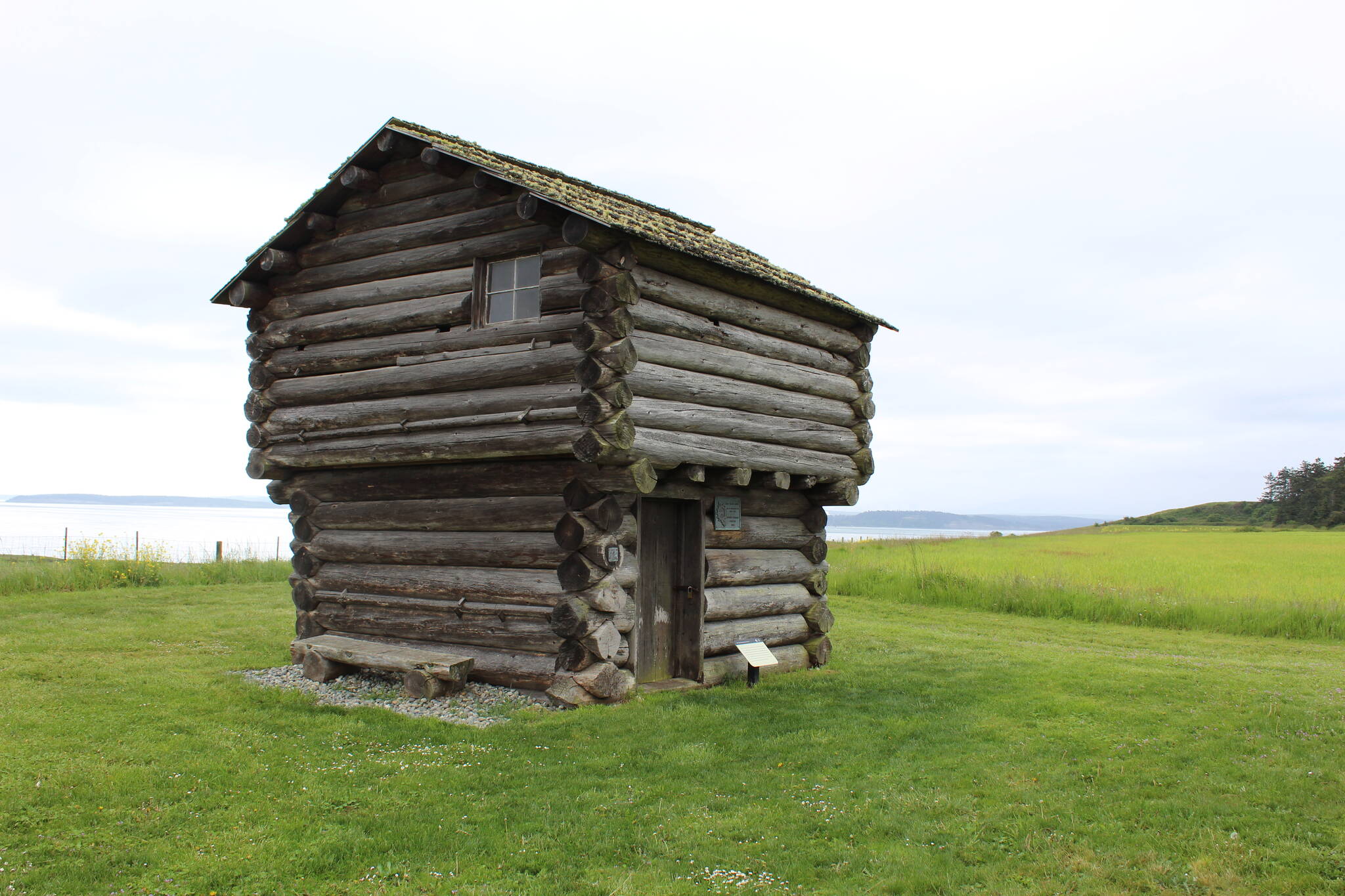Visitors will soon be able to venture again inside a historic Central Whidbey landmark.
The Jacob and Sarah Ebey House in the center of Ebey’s Landing National Historical Reserve will be open to the public from 10 a.m. to 4 p.m. on Fridays, Saturdays and Sundays beginning Memorial Day weekend.
During these hours, the Ebey House and adjacent blockhouse will be staffed with volunteer docents to answer questions and provide information about the family and history of the man known as Whidbey Island’s first permanent white settler.
Isaac Neff Ebey and his wife, Rebecca, claimed 640 acres of what is now Ebey’s Prairie through the Donation Land Claim Act in 1850. Unlike the orderly, vertically oriented properties that would be staked by future settlers, Isaac Ebey’s parcel cuts diagonally across the terrain over a section of land devoid of hills or trees.
“He was very, very strategic about his claim being the pristine, prime, prairie farmland,” Reserve Manager Marie Shimada said.
The rest of the Ebeys, who followed Isaac to Whidbey Island from their home in Adair County, Mo., traversed the Oregon Trail in two waves; Rebecca came first with her and Isaac’s two sons in 1851. Isaac’s parents, Jacob and Sarah, followed with three of Isaac’s grown siblings in 1854 and began construction of the now historic Ebey House the following year.
Though Jacob, age 61 when he made the journey to Whidbey, was already much older than the typical Oregon Trail pioneer, he outlived both Isaac and Rebecca. The latter died of tuberculosis in 1853 following a difficult birth, while the former was killed by members of the Kake indigenous tribe of Southern Alaska in 1857 in retaliation for the murder of 27 tribal members, including a chief, by the U.S. military the previous year.
This event and other interactions with the indigenous peoples who lived in the area informed some of the white settlers’ architecture choices, according to Reserve Education and Outreach Coordinator Jordan Belcher. Though the white settlers generally had little to fear from their indigenous neighbors, the state government circulated a narrative that the settlers needed to prepare to defend themselves from tribal attacks.
“In sort of response to that, these blockhouses started popping up as buildings of defense,” Belcher said.
The perceived threat never came to fruition. The settlers never used the blockhouses that now dotted the island to defend against local tribes, and the structures were converted to storage facilities or put toward other purposes.
The blockhouse next to the Ebey House is one of four of these blockhouses that remain on Ebey’s Reserve, Shimada said. Isaac’s younger brother, Winfield, eventually converted the top floor into an office from which he practiced law.
The property passed through several generations of Ebeys before being sold to the Pratts, another prominent family in the area, in 1929. The house was occupied as late as the 1980s, when it was owned and rented out by the Pratt family. In 1999, the Pratts donated the property to the Nature Conservancy — an usual move, Shimada said, as the conservancy doesn’t tend to manage buildings or active estates.
The conservancy transferred ownership to the house’s current owner, the National Park Service, in 2002.
For Whidbey residents and visitors, there has never been a better time to learn about Central Whidbey history. Shimada said the Reserve’s outreach committee is launching an initiative this summer to revamp interpretive panels inside the Reserve.
This effort is intended to better coordinate educational efforts with community partners, bring interpretive materials into a digital space and make story-telling on the Reserve more equitable and inclusive, Shimada said.
Whidbey residents might also consider joining the Reserve’s volunteer team, which Shimada said she and other Reserve officials are always seeking to augment.
The Reserve needs people to volunteer in multiple capacities, including as docents and to help with trail maintenance and upkeep.



